How to Learn Spanish from Video?
Read other articles:
Back to posts
Very few language learning mediums allow you to immerse yourself in the native speaker experience, with visual context and body language accompanying the language.
Video learning does—and that’s just one of the many reasons why many second language learners are using it as a preferred option.
In this article, we look at learning Spanish—and all of the video examples included relate to that. After all, Spanish is the second most spoken language in the world (after Chinese Mandarin) based solely on the number of native speakers. Spanish is spoken in 20 countries around the world.
The same principles discussed here, however, apply to learning almost any language.
Whether, you’re a beginner trying to get to grips with Spanish for the first time or an intermediate or advanced student who wants to reach the next level, both active and passive learning methods using video can improve your proficiency in Spanish.
If you don’t have a few minutes to read this post, try out our free Chrome extension, which provides an intelligent, AI-based language tutor right at your side when learning language through YouTube videos.
Why video is perfect for learning Spanish
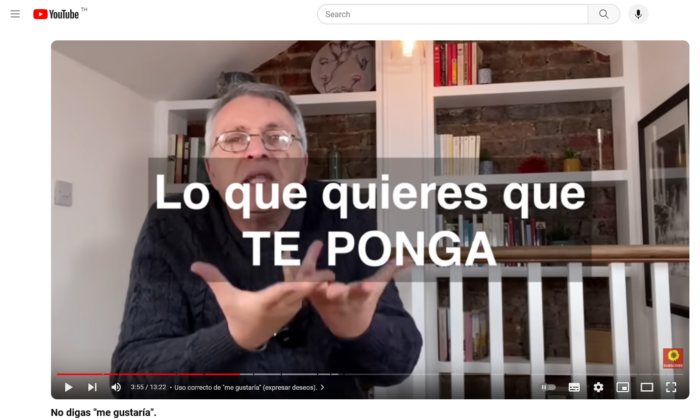
Video is the ideal medium for learning Spanish regardless of the level you’re at.
For beginners, video learning offers:
- Fewer words, more pictures, and more body language: nonverbal communication is essential when learning any language. With video, visual cues from native speakers speaking Spanish can aid comprehension, allowing you to pick up the target language from day one.
- Immersion: Spanish learners can immerse themselves in the language from the start, learning in the same way that children learn their native languages, absorbing content quickly and using it when they’re ready.
- Simple, fun topics: video can provide access to fun content like cartoons and lighthearted clips, as well as lessons pitched at the right level.
For intermediate and more advanced Spanish learners, video learning offers:
- More advanced content like news channels, documentaries, movies, and TV series that provide rich cultural context to aid learning.
- Accompanying language learning apps that help you easily track new language and save it to a personalized language library.
One golden rule: all videos should be in Spanish
Before we get into some useful tips for learning Spanish from video, one golden rule: learn Spanish from native speakers in the target language.
Instruction in foreign languages should be in the native tongue, not the mother tongue of the learners. This is one of the central tenets of Dr Stephen Krashen’s second language acquisition theory, which has heavily influenced many modern language-teaching methodologies.
It’s also best to learn from videos that are subtitled in the target language rather than your native language. Otherwise, you’ll get lazy and just follow the “story” in your native language, which can hinder the process of acquiring new language.
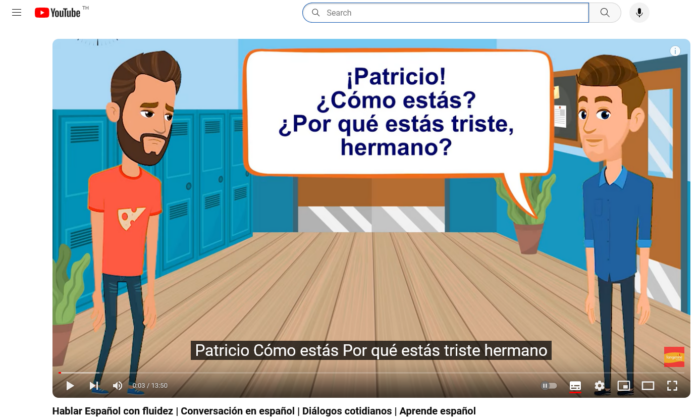
Tips for learning Spanish from video
Let’s get into the tips…
- Watch Spanish videos without actively trying to learn
If you’re just starting out with learning Spanish, find some simple videos and watch and listen to them. This will provide some “big picture” exposure to the target language.
At this stage, you’re not writing down phrases or vocabulary—simply getting a feel of the language in context and maybe learning a few simple, common phrases like greetings.
Watch videos on your favorite topics or you’ll quickly get bored. If you love travel, it’s easy to find travel videos in Spanish about one of the native-speaking Spanish countries.
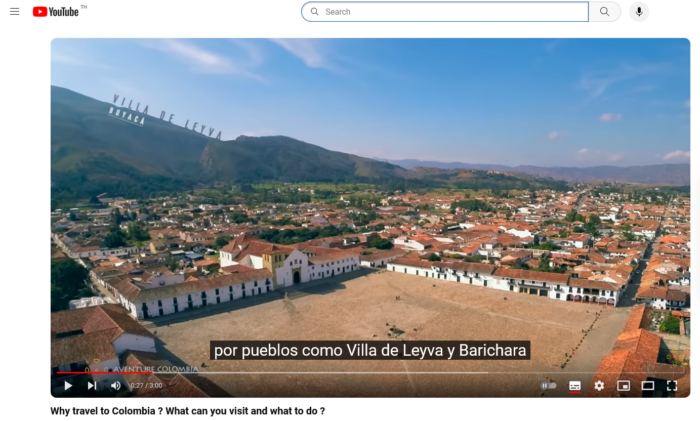
Or perhaps you like cartoons, cooking or skydiving? There are plenty of videos out there in Spanish on every topic under the sun.
When watching compelling videos in Spanish, you’ll pick up more language naturally than you expect.
- Find video content at the right level
Find video content in Spanish just a little above your current proficiency level.
Another central tenet of Krashen’s language acquisition theory is that language is best acquired when learners receive compressible input in an anxiety-free environment. YouTube videos provide an anxiety-free environment but, for comprehensible input, the language used in the video must be pitched at the right level.
If you’re an intermediate or advanced student, you won’t learn much from videos intended for beginners, like this one:
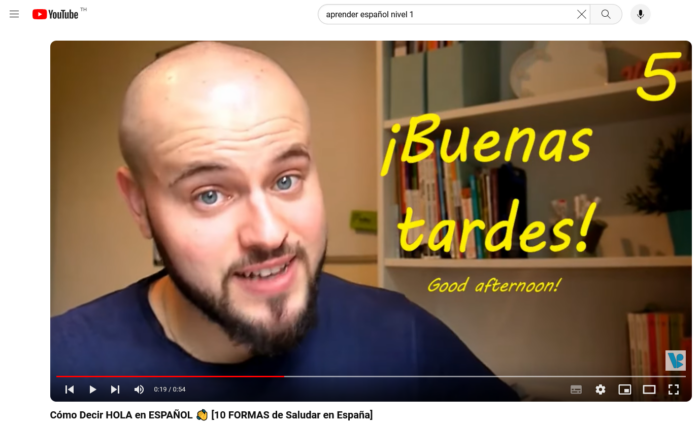
Once you find and click on a few videos, the recommendations in the right-hand panel on the YouTube window should suggest plenty of other relevant videos.
- Find an appropriate Spanish tutor on YouTube
Many fine Spanish teachers ply their trade on YouTube and it shouldn’t be too difficult to get some free lessons from a tutor appropriate for your proficiency level.
The huge library of language-learning content available includes many channels from tutors who post videos delivered entirely in Spanish.
Find a tutor who doesn’t simply take you through vocabulary and phrase lists, which will quickly bore you to tears. It’s far better to follow tutors who are a little more inspiring with their methods:
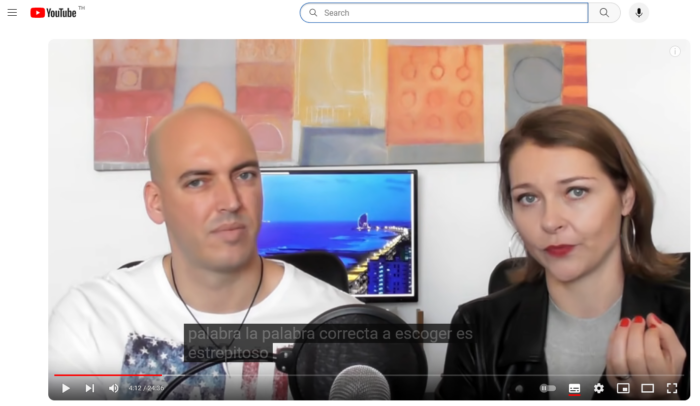
Videos from Spanish-speaking tutors who make the experience engaging are far more likely to hold your attention and produce better learning outcomes.
A quick additional tip: search for tutors on YouTube using Spanish, e.g. aprender Espanol nivel 1 means learn Spanish level 1. That should return plenty of potential language-learning videos in Spanish to watch.
- Find a series you like and watch it repeatedly
You don’t find Spanish language tutors on YouTube very inspiring?
Another good way to start actively learning Spanish from video is to find series that you like and watch them repeatedly.
Repetition can be highly beneficial for language learning but you’re more likely to pay attention for longer if you find the content engaging.
The series could be a Spanish TV series you like or a series designed to teach you Spanish:

The beauty of learning from a video is that you can play it in small chunks, pause, jump back, and play it again.
- Follow Spanish-speaking vloggers on your favorite topics
Another good strategy for picking up a language and maintaining interest in the learning experience—especially for more advanced learners—is to follow video bloggers on your favorite topics.
This could be anything. There’ll be a Spanish native speaker talking about it and presenting a video on it somewhere. You can pick up valuable new language on a topic you want to build fluency and proficiency in.
Love kayaking.? Here’s a vlog in Spanish on the topic:
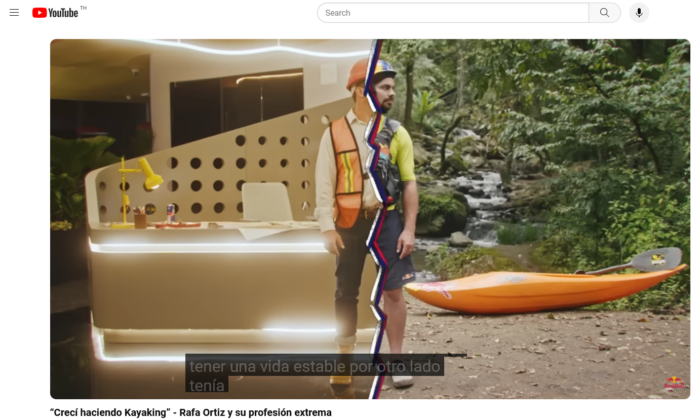
- Learn from songs on YouTube
Acquiring Spanish from songs is another language-learning method that combines entertainment and education.
We all have songs that inspire and motivate us. We remember the words and phrases—often from songs that are decades old. That’s essentially the basis of learning languages.
If you can find songs in the target language that you want to listen to again and again, it’s a powerful way to learn.
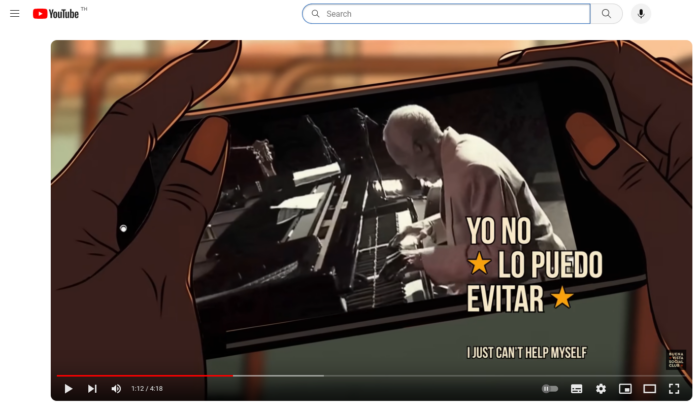
One caveat with learning a second language from songs: phrases used in songs may not always be appropriate in real-life situations, so knowing how and when to use the language is as important as knowing the meaning of the lyrics.
- Track new language acquisition and build a personalized language library
As you learn Spanish from videos, you’ll pick up many new language constructions, phrases, and vocabulary that you want to remember.
You can speed up the learning process by utilizing language learning apps designed for this purpose
For instance, this free Chrome extension uses the best of AI and human learning methods to help you translate captioned YouTube videos from Spanish to English while giving you the option to explain individual phrases from the video and save them to your personalized language library—without having to write anything down.
You can also repeat a particular saved phrase from the video you’re watching to reinforce pronunciation.

No more scruffy notes and jotted-down phrases tucked away at the back of a drawer. Everything you learn in Spanish over time is collected together in one place and stored securely in the cloud.
Whether you prefer to watch subtitled TV shows, documentaries, short clips or other engaging video content, the Chrome extension will help you actively acquire Spanish. You can learn how to install and use the app here.
Read other articles:
Back to posts
